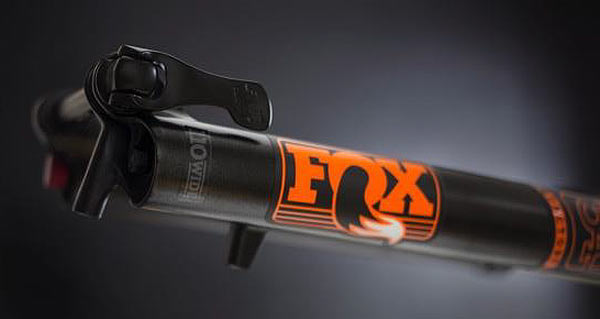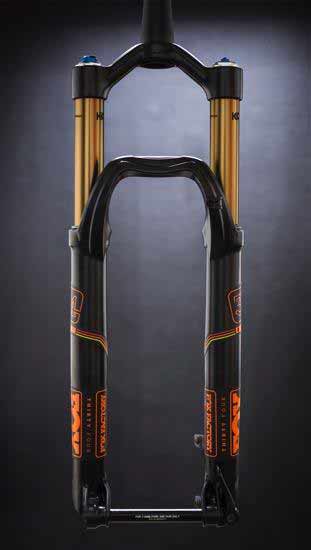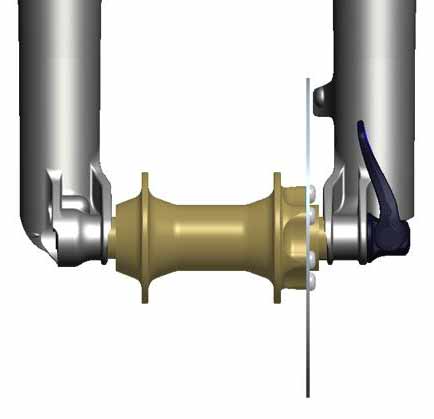Well, we knew they were coming, and the all-new 2016 Fox Factory 34 FLOAT 27.5+ becomes the first new generation fork designed specifically around 27.5+ tires and the new 15×110 axle standard.
The fork is a completely new model, with everything optimized for wider rims and tires. It’s a whole new chassis, designed specifically for any additional stresses caused by the added leverage the wider hub and increased traction the fatter tires have over it. Beyond the wider legs, there’s a lot of new tech on here, including a brand new 4th generation FIT4 cartridge and an all-new FLOAT damper. Our guess is it’s borrowing some internal goodness from the impressive 36 series introduced last year.
Basically, Fox’s PR manager Mark Jordan says it’s an entirely new fork…but they’re not quite ready to release all of the tech details yet. Those will come at Sea Otter Classic or just before. In the meantime, here’s a quick run down of what is known…
Key specs are:
- 15×110 thru axle
- New FLOAT air spring
- 4th-gen FIT4 closed cartridge damper
- 27.5 x 3.25″ tire clearance
- Travel: 110mm to 150mm
- Offset: 51mm
- Axle to Crown: (checking on it, will update)
Weight is unknown at this point as they won’t actually start building production models until May, and they won’t venture a guess as to how much of an increase it’ll be over the standard 34. Travel is not user adjustable, so you’ll need to buy it how you want it.
Not sure what all the fuss is about? Current mountain bike front wheels use 100mm hub spacing, meaning there’s 100mm between the inner edges of the dropouts. The new 15×110 standard pushes that out to 110mm. That means each spoke flange is 5mm further from hub center and there’s at least 10mm more tire clearance up top. The benefit is that fatter tires can be used for better traction, and the wheels have a wider spoke base, which improves the bracing angle and makes stiffer wheels.
On the rendering above, shows that Fox offset the dropouts about 5mm to the inside, pushing the legs farther out to create even more room for tires. After all, a 3.25″ tire is 82.5mm wide, considerably more of a gain than 10mm compared to a 2.5″ tire (63.5mm). That’s 19mm difference.
Of course, normal 27.5″ rims and tires will fit, too, giving any wheel built on a new hub the benefits of wider bracing angle and stiffer wheel, just with way more tire clearance. If you want…this one’s a new addition, not a replacement for the standard 34.
More as we get it!


